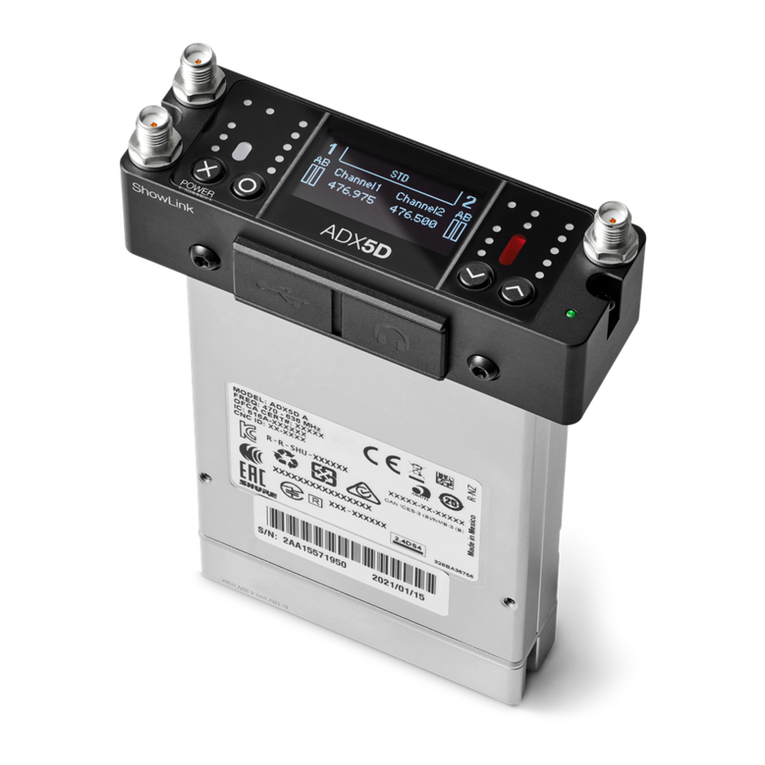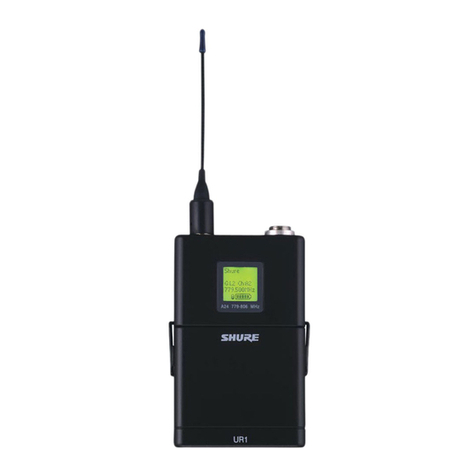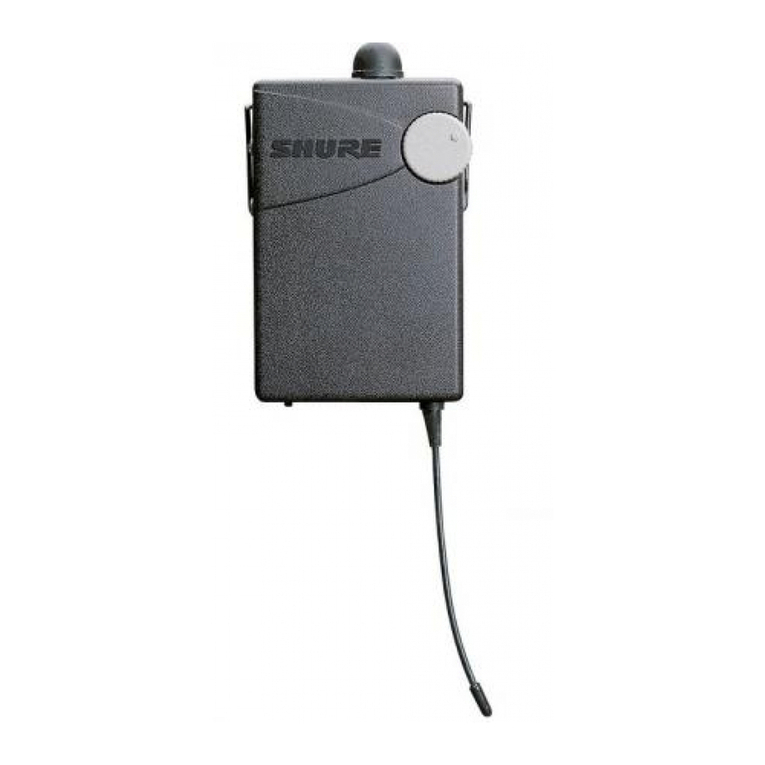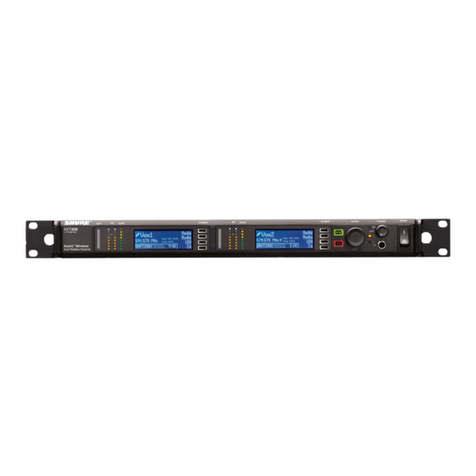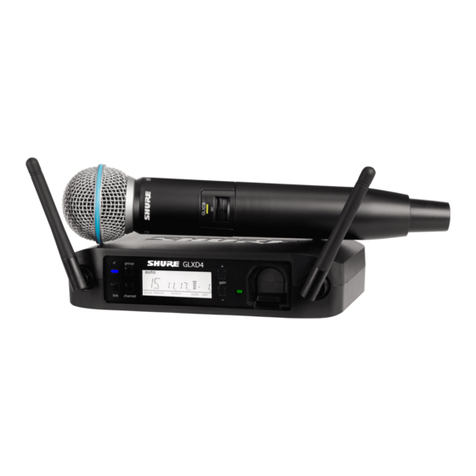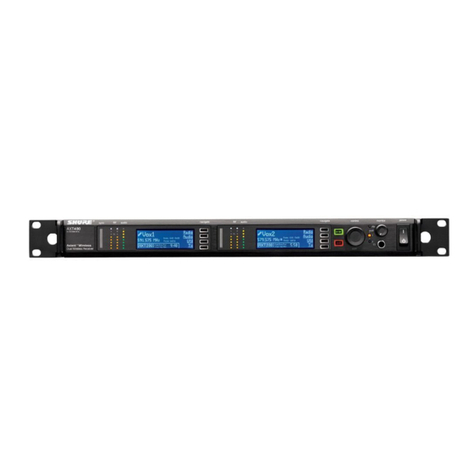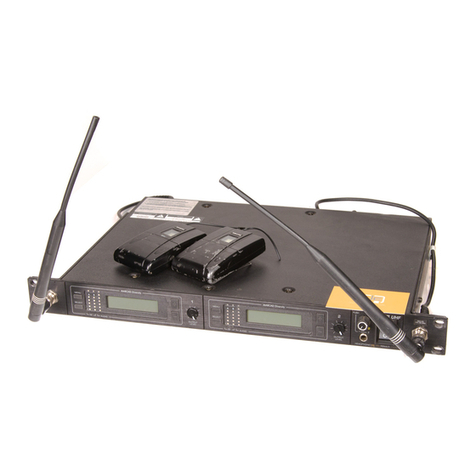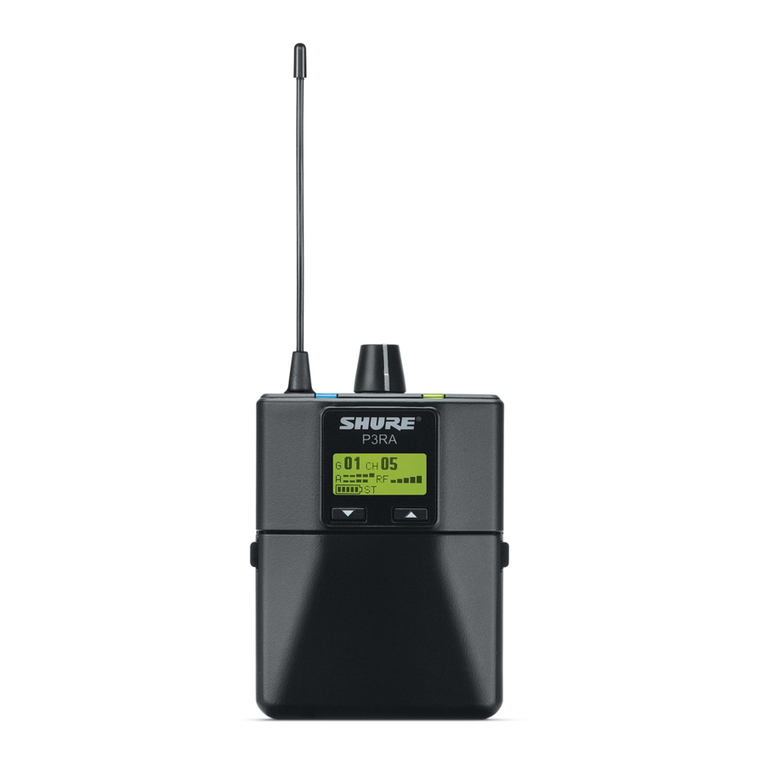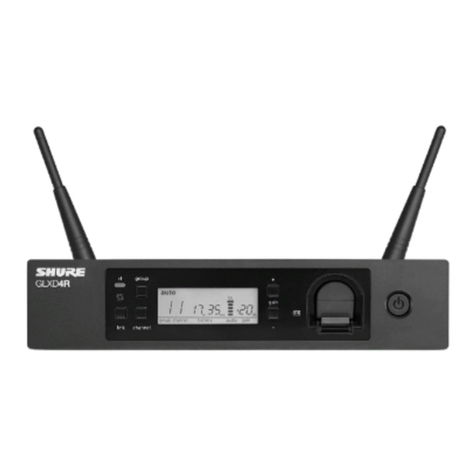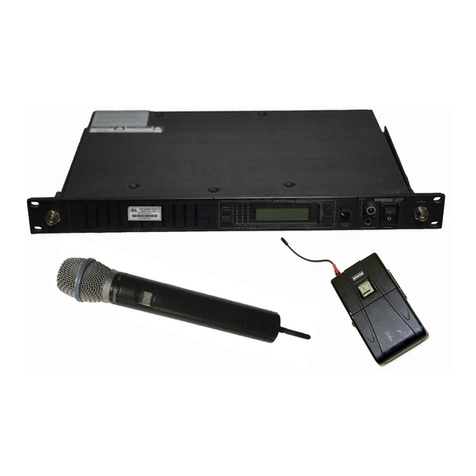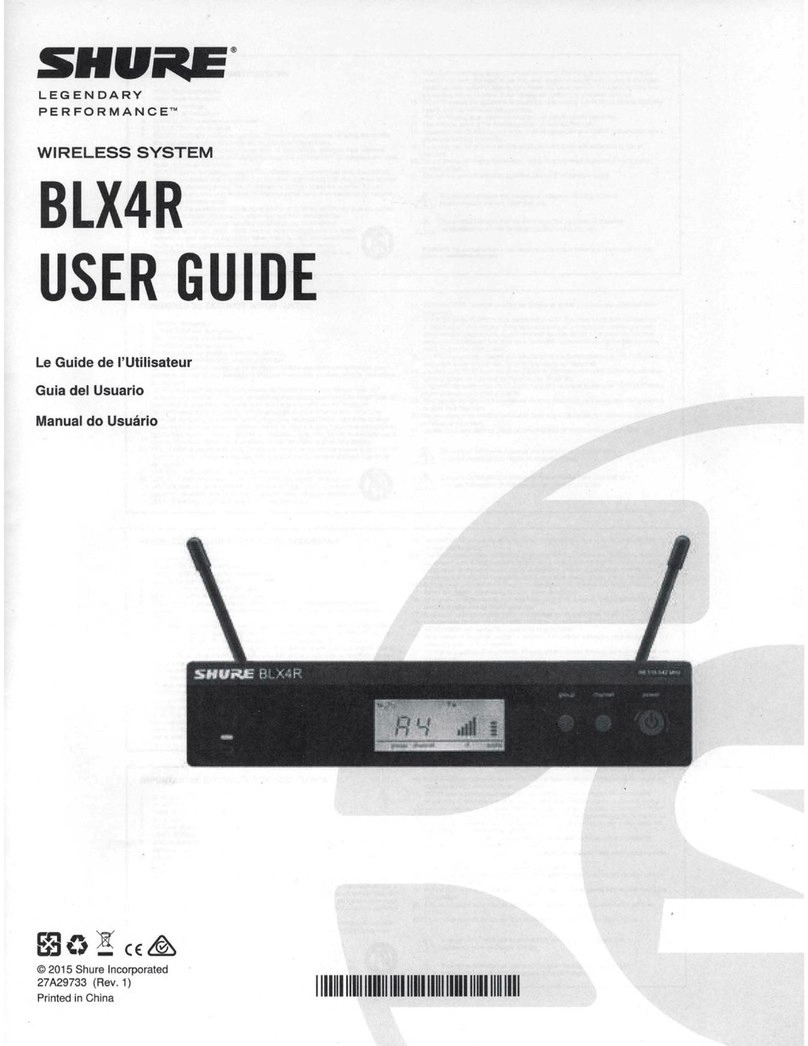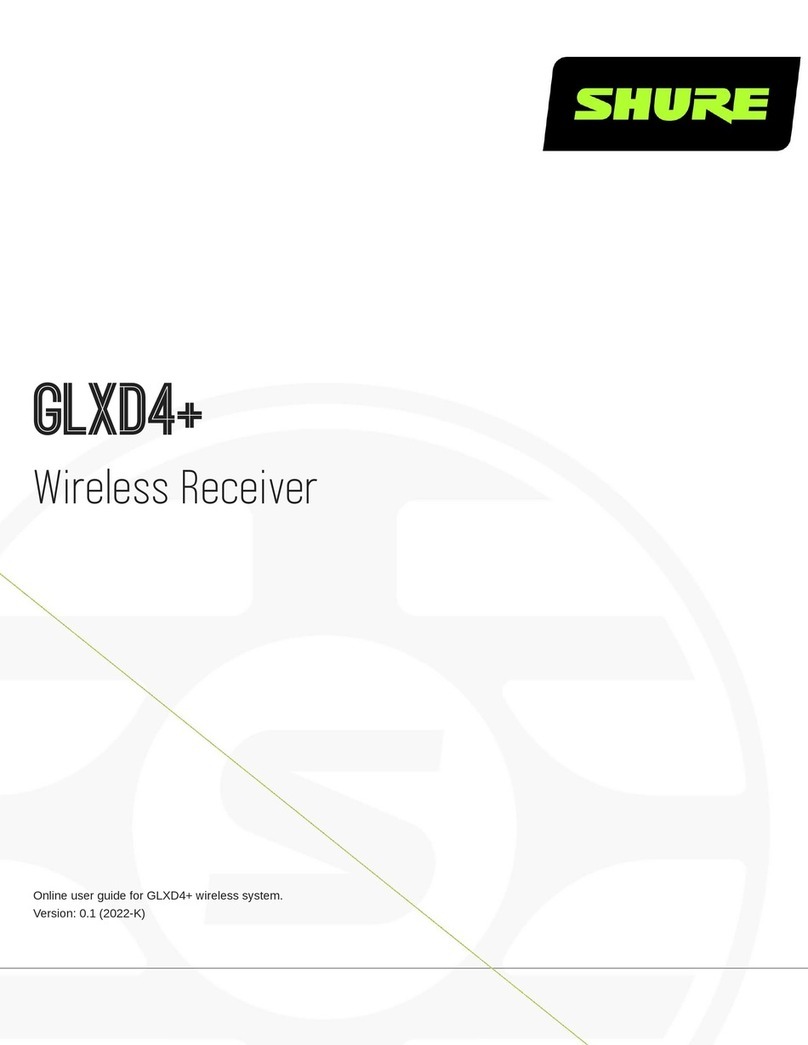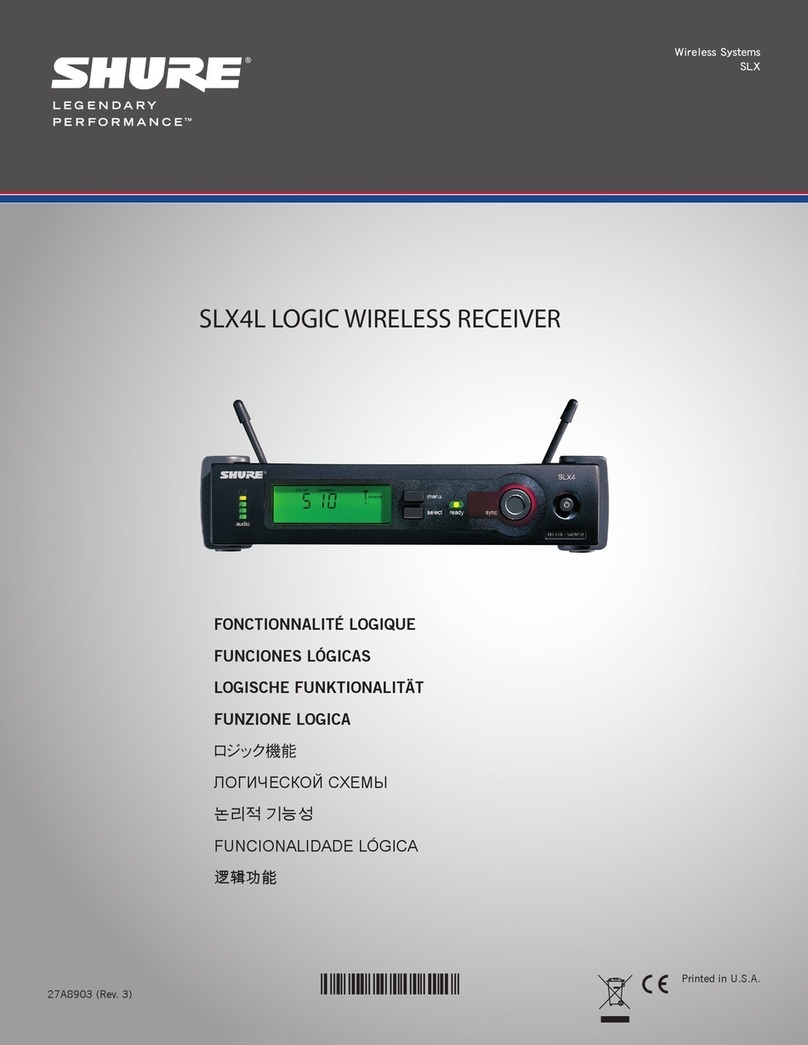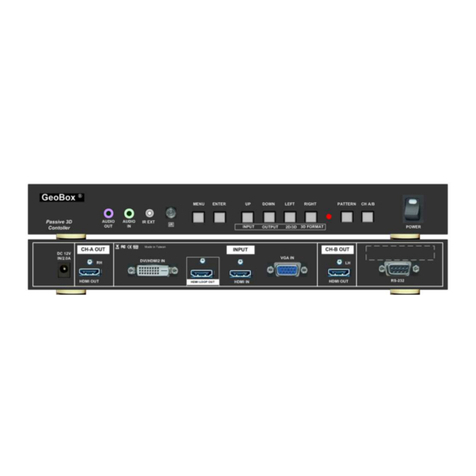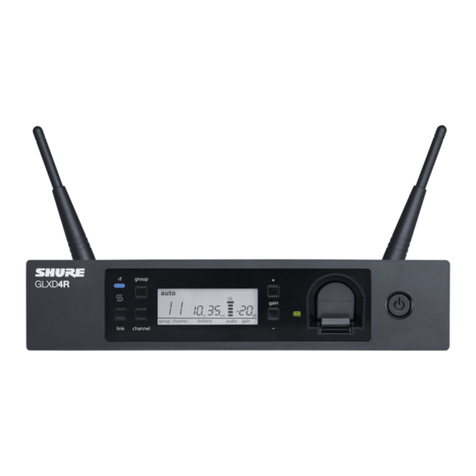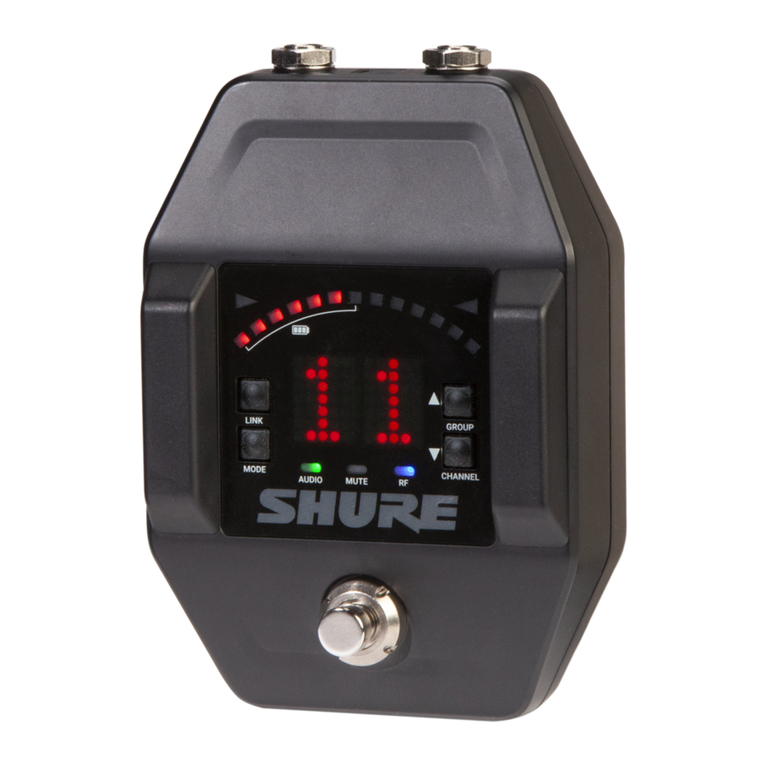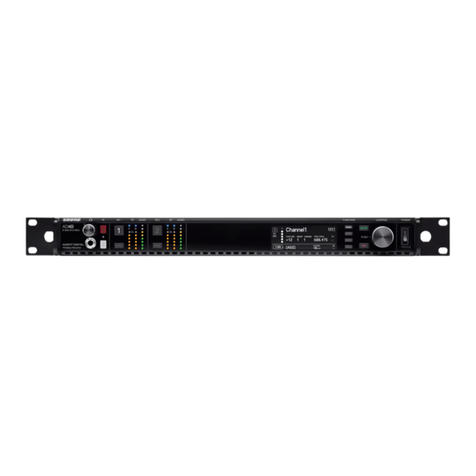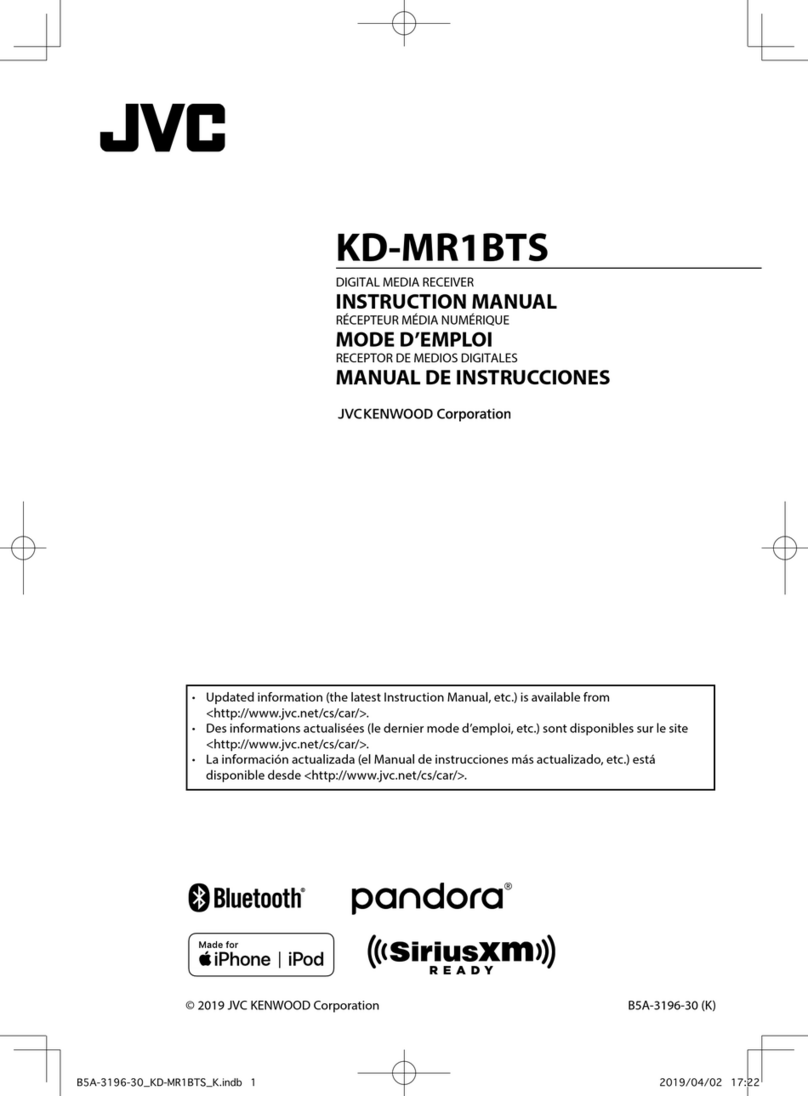
Shure LX4 Diversity Receiver
2
Characteristics 25D1008 (BK)
Circuit Description
The Shure Model LX4 Diversity Receiver is a single-conversion
superheterodyne diversity FM receiver operating in the 169 –240 MHz
band. It is intended for use with compatible Shure VHF wireless trans-
mitters, including the Shure LX, L, EC, SC, and T series hand-held and
body-pack transmitters.
The LX4 has balanced LO-Z output (3-pin XLR-type connector), an
unbalanced aux level audio output (1/4 inch monophonic phone jack),
and audio output level (volume) control for all outputs.
The LX4 has an externally-accessible squelch control for signal-to-
noise muting system. The recessed potentiometer for squelch control is
screwdriver-adjustable.
A one quarter wavelength whip type antenna can be mounted direct-
ly to the receiver or to a full rack panel (Shure model WA440), and can
then be cabled to the receiver. Also, a Shure model WA404 antenna
splitter can be used to provide antenna inputs and dc power to the LX4.
Audio output is a 1/4-inch, single circuit (monophonic) phone jack.
Diversity channel selection and muting are provided by a noise-
operated squelch system. Noise signals are obtained from the additional
detector outputs at pin 9 of U100 and U200. For diversity channel A,
the noise signal is adjusted by squelch level control R130 before amplifi-
cation by U1B. Active high-pass filter U1C removes audio components
that could cause false triggering. The noise is then rectified by D2 and
smoothed by C18 to provide a dc voltage that varies in accordance with
the amount of noise present on the detected signal.
An identical scheme is followed for diversity channel B, where noise
signals are adjusted by squelch level control R230 before being amplified
by U2B, filtered by U2C, rectified by D1, and smoothed by C17.
Two diversity peak A/B (yellow) LEDS are located on the front of the
unit illuminate to indicate which diversity channel (A, B, or both) have
been selected by the receiver. When the quality of the received signal
is below the squelch threshold level, both LEDs are extinguished. Audio
peak LEDs illuminate when the deviation level of the received signal
exceeds the following deviation:
LED Color Deviation kHz
1 –Green 1.5
2 –Green 4.0
3 –Green 7.0
4 –Amber 11.0
5 –Red 14.0
